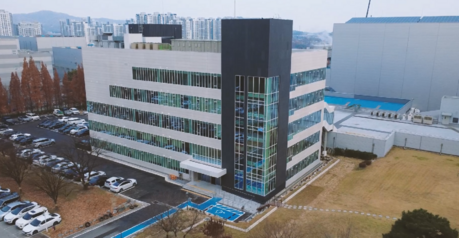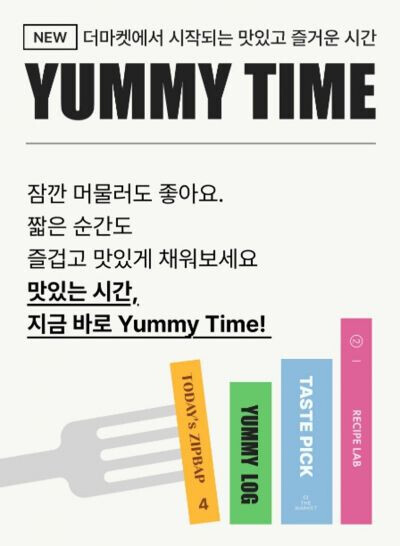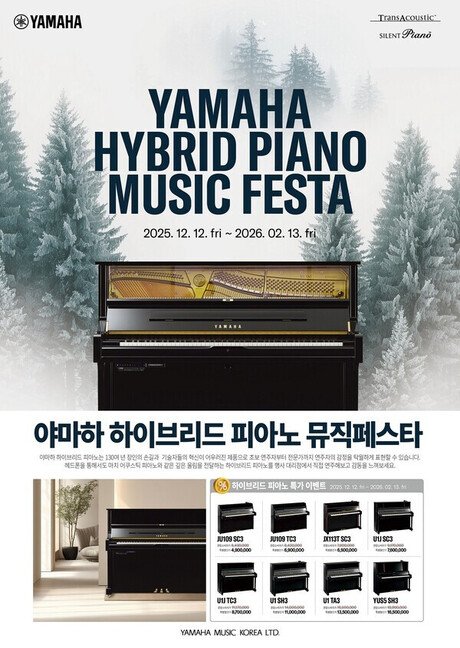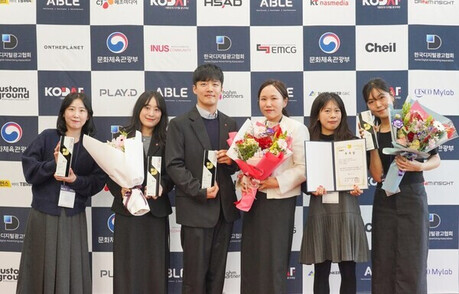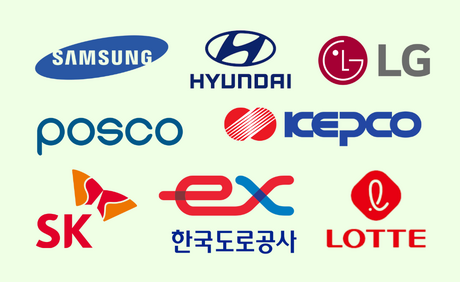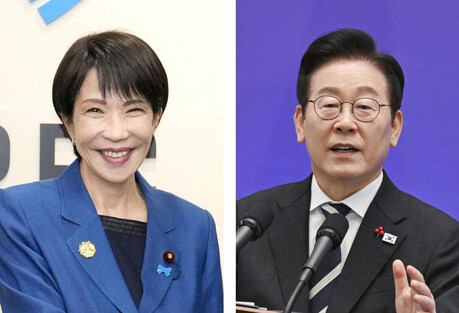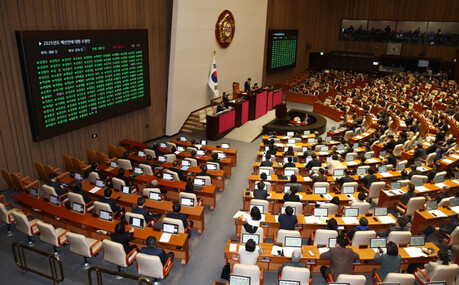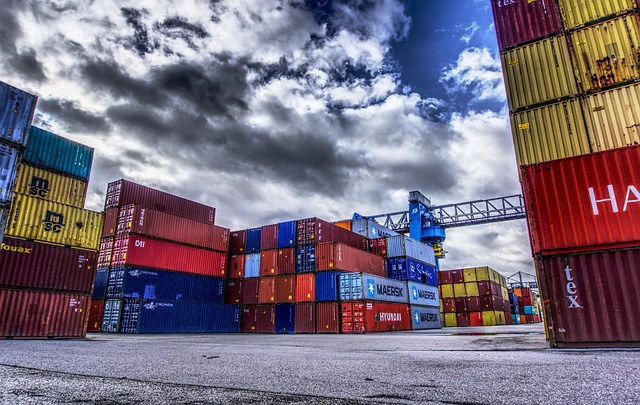
South Korea's exports experienced a downturn in May, registering a 1.3% year-on-year decrease to $57.27 billion, marking the first decline in four months. This contraction occurred despite robust performance in semiconductor exports, which hit a record high for May. The primary drag stemmed from the impact of US government tariffs, leading to reduced shipments for 10 out of 15 major export categories, including automobiles and petrochemicals. Despite the export slump, a more significant fall in imports—down 5.3% to $50.33 billion—resulted in a fourth consecutive month of trade surplus, reaching $6.94 billion.
According to the Ministry of Trade, Industry and Energy's "May Import/Export Trends" report, while overall exports fell, daily average exports, adjusted for working days, saw a 1% increase to $2.66 billion, reaching their highest level this year.
Five key export items showcased growth last month: semiconductors, wireless communication devices, computers, ships, and bio-health products. Semiconductor exports, the nation's top export, soared by 21.2% year-on-year to $13.8 billion. This surge was driven by sustained demand for high-value memory products like HBM (High Bandwidth Memory) and DDR5, coupled with rising fixed prices. This marked the highest May performance ever for semiconductors.
Wireless communication device exports increased by 3.9% to $1.3 billion, fueled by a 30% jump in smartphone exports. Computer exports also turned positive, rising by 2.3% to $1.1 billion. Both bio-health and ship exports continued their upward trajectory for the fourth and third consecutive months, respectively.
Broad Export Weakness Beyond Semiconductors
Despite these bright spots, a significant portion of South Korea's major export categories experienced declines. Automobile exports fell by 4.4% to $6.2 billion. While electric vehicle exports to the European Union (EU) and used car exports performed well, a substantial decrease in shipments to the United States proved to be a major factor. This decline can be attributed to the broader impact of US trade policies and item-specific tariffs, which have influenced supply chains and market access, potentially alongside shifts in US consumer demand.
Steel exports also saw a 12.4% reduction to $2.6 billion. The prolonged weakness in unit prices, coupled with the global downturn in the construction sector and the ongoing impact of US Section 232 tariffs on steel imports, contributed to reduced demand.
Petroleum product and petrochemical exports uniformly decreased, primarily due to a more than 10% drop in crude oil prices compared to last year. This led to lower unit prices for petroleum products and reduced export unit prices for petrochemicals, cutting deeply into export values. Petroleum product exports plummeted by 20.9% to $3.58 billion, and petrochemical exports by 20.8% to $3.24 billion. Global oversupply in certain petrochemical segments, particularly in Asia, also compounded the price weakness.
Secondary batteries recorded an 18.4% decline to $524 million, affected by falling mineral prices and a broader deceleration in demand for electric vehicle batteries globally. The slowdown in EV sales in key markets has directly impacted battery and component exports.
Display exports decreased by 18% to $1.34 billion, despite positive factors like new product launches in the IT front-end industry. The primary reason for this decline was reduced imports from ASEAN, a region where major import destinations for Korean displays are concentrated, reflecting potential economic slowdowns or increased local production capacities within the bloc.
General machinery exports also suffered a 5.3% decrease to $4.06 billion. Concerns about global economic deceleration and reduced investment, exacerbated by the effects of US tariff measures, continued to suppress demand.
Other sectors experiencing export declines included auto parts (-9.4%), textiles (-11.4%), and home appliances (-14.9%), all impacted by global economic uncertainties that dampened overall demand.
Regional Shifts and Government Response
Geographically, exports to seven of South Korea's nine major markets decreased in May. Crucially, exports to both the United States and China, the nation's two largest export destinations, declined.
Exports to China fell by 8.4% to $10.42 billion, primarily due to significant drops in semiconductor (-14.6%) and petrochemical (-20.9%) exports. This reflects the slowdown in China's economy, particularly in manufacturing and construction, which are major consumers of these Korean goods.
Exports to the United States decreased by 8.1% to $10.05 billion. While wireless communication devices, petroleum products, and secondary batteries showed strong performance, a drastic 32% reduction in automobile exports—the largest export category to the US—was the dominant factor.
Exports to ASEAN saw a 1.3% decrease to $10.01 billion, despite a robust 47.2% increase in semiconductor exports. This was offset by significant declines in petroleum product (-44.4%) and petrochemical (-27.3%) exports to the region.
Conversely, exports to the EU increased by 4% to $6.05 billion, marking an all-time high for May to this region. This growth was driven by strong increases in automobile (37.6%) and semiconductor (11.1%) exports, even as ship (-5.3%) and general machinery (-13.3%) exports to the EU saw some weakness.
On the import side, May saw a 5.3% year-on-year decrease to $50.33 billion, with both energy and non-energy imports falling. Energy imports dropped by 12.8% to $10 billion, driven by reduced imports of crude oil (-14%) and gas (-0.3%). Non-energy imports also declined by 3.2% to $40.2 billion, despite increases in semiconductor equipment (11.4%) and computers (41.2%) imports, as imports of mobile phones (-8.2%) and auto parts (-4.8%) decreased.
Minister of Trade, Industry and Energy Ahn Duk-geun stated that the simultaneous decline in exports to both the US and China indicates the global and Korean export impacts of recent US tariff measures. He also noted that the drop in international oil prices to the early $60s in May significantly contributed to the overall export decline, particularly for petroleum products and petrochemicals.
Minister Ahn emphasized the government's commitment to minimizing damage to Korean exporters and maximizing national interests through all available means. This includes engaging with the US government to seek mutually beneficial solutions regarding tariff measures and promptly executing the approximately 230 billion KRW (approximately $167 million USD) budget allocated for tariff response. The government aims to diversify export markets, bolster R&D in high-value-added products, and provide targeted support to industries most affected by trade challenges.
[Copyright (c) Global Economic Times. All Rights Reserved.]
















